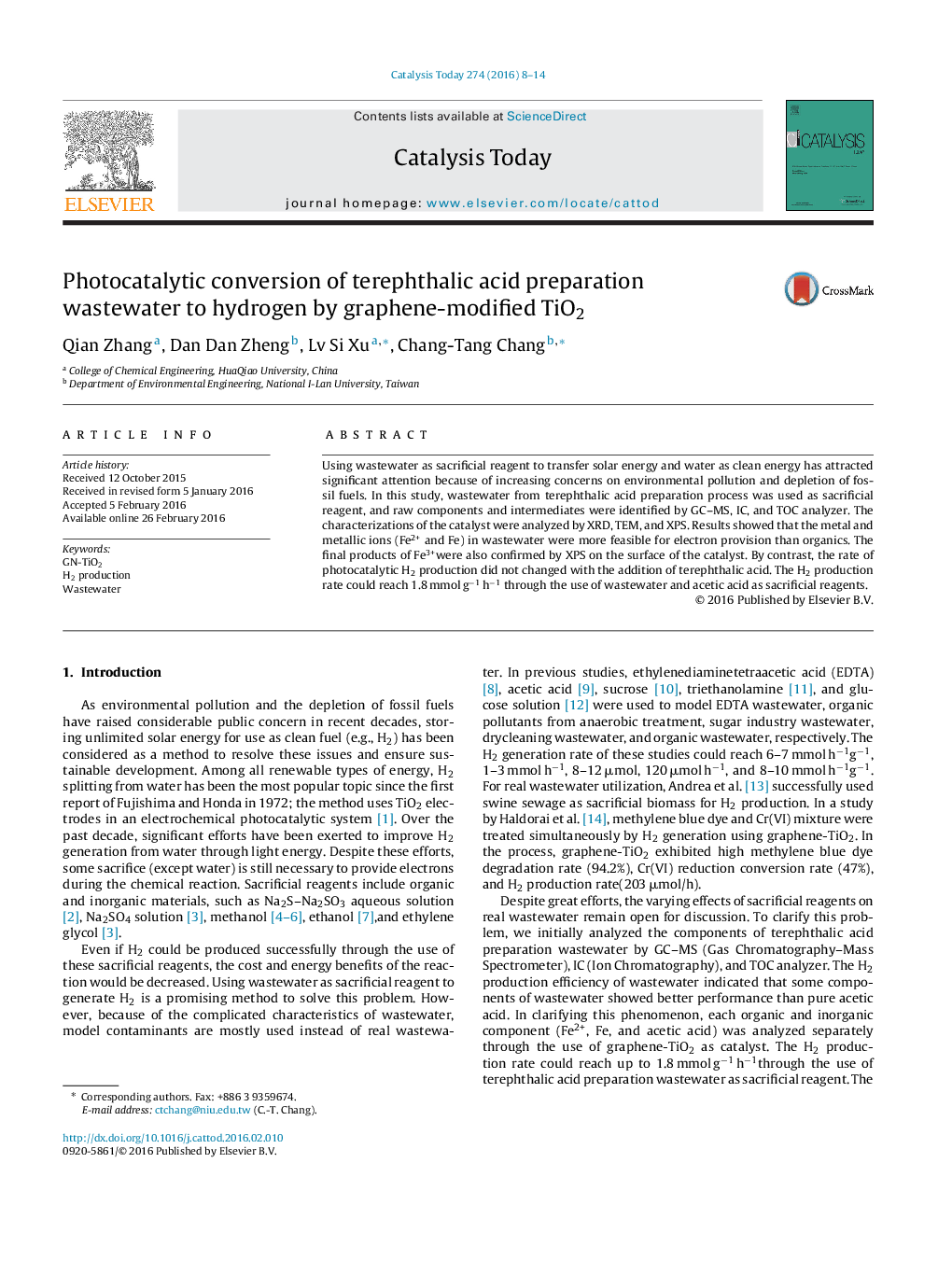| Article ID | Journal | Published Year | Pages | File Type |
|---|---|---|---|---|
| 53194 | Catalysis Today | 2016 | 7 Pages |
•In this study, wastewater from terephthalic acid preparation process was used as sacrificial reagent.•The component of metal and metallic ions (Fe2+ and Fe) in wastewater were more feasible for electron provision than organics.•The final products of Fe3+ were also confirmed by XPS on the surface of the catalyst.
Using wastewater as sacrificial reagent to transfer solar energy and water as clean energy has attracted significant attention because of increasing concerns on environmental pollution and depletion of fossil fuels. In this study, wastewater from terephthalic acid preparation process was used as sacrificial reagent, and raw components and intermediates were identified by GC–MS, IC, and TOC analyzer. The characterizations of the catalyst were analyzed by XRD, TEM, and XPS. Results showed that the metal and metallic ions (Fe2+ and Fe) in wastewater were more feasible for electron provision than organics. The final products of Fe3+were also confirmed by XPS on the surface of the catalyst. By contrast, the rate of photocatalytic H2 production did not changed with the addition of terephthalic acid. The H2 production rate could reach 1.8 mmol g−1 h−1 through the use of wastewater and acetic acid as sacrificial reagents.
Graphical abstractFigure optionsDownload full-size imageDownload high-quality image (144 K)Download as PowerPoint slide
